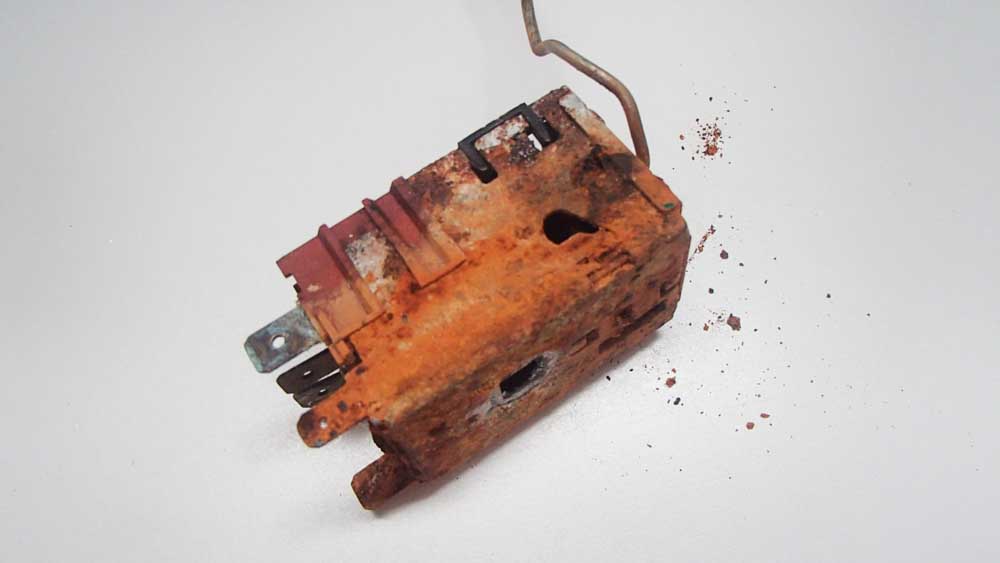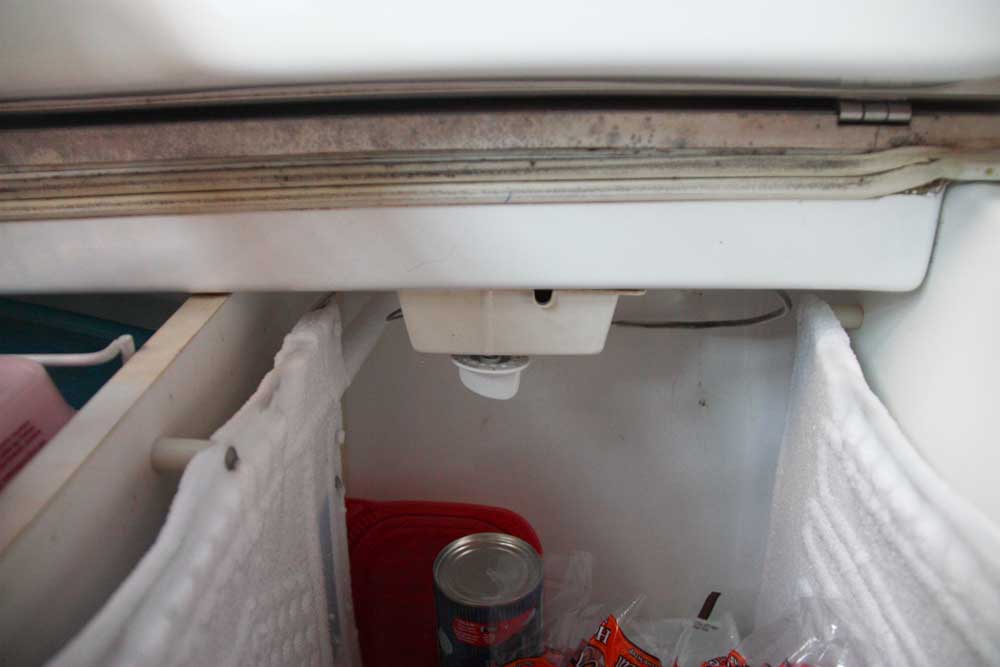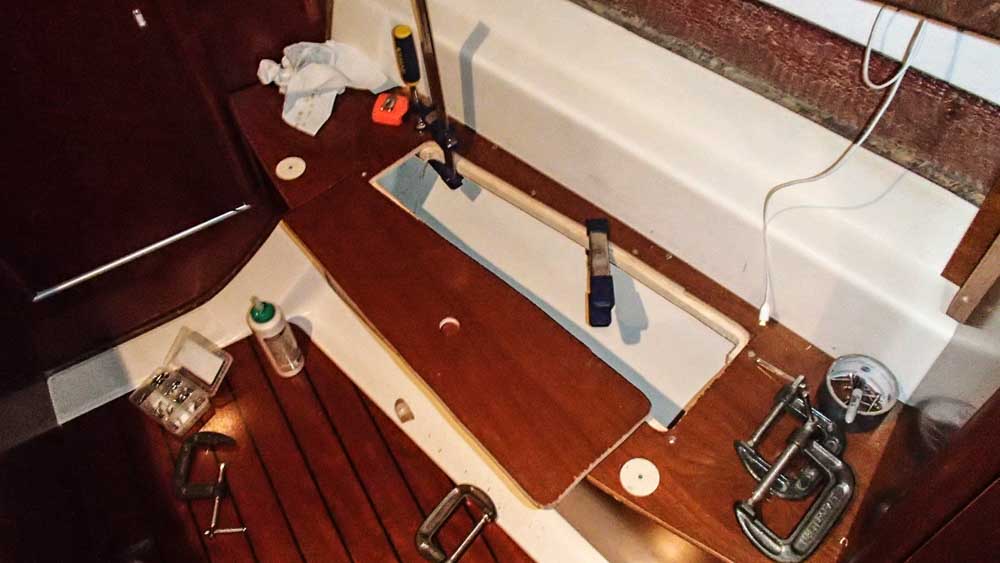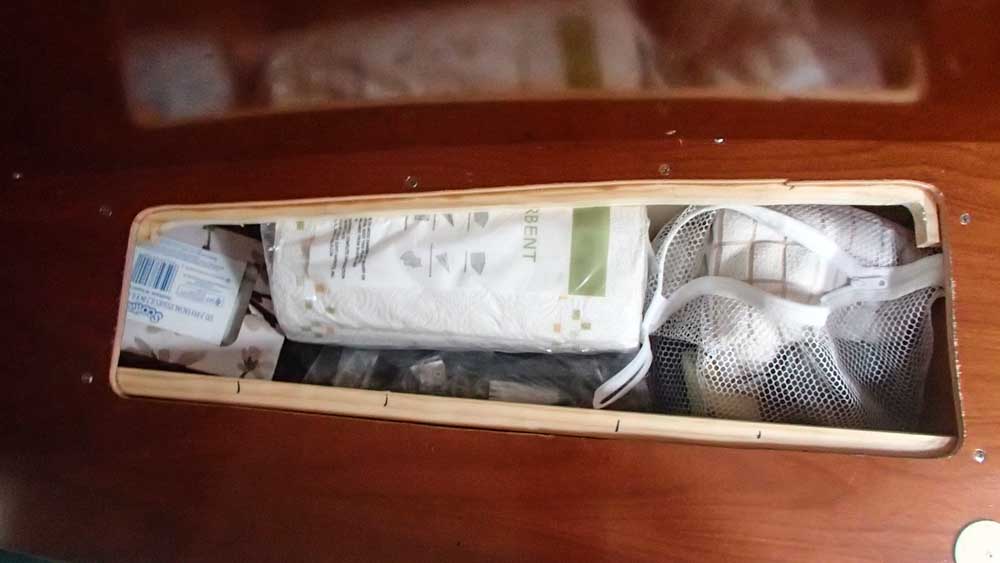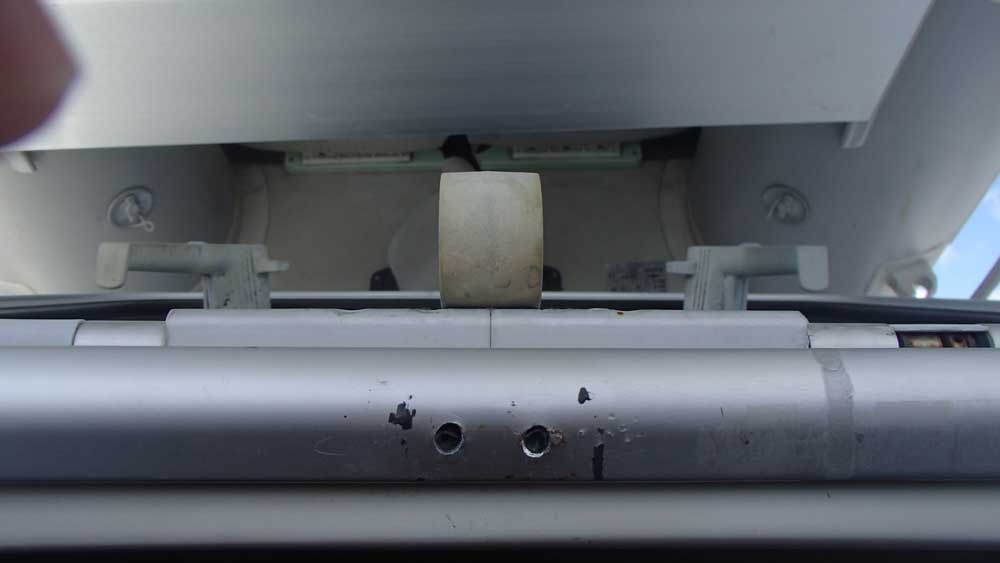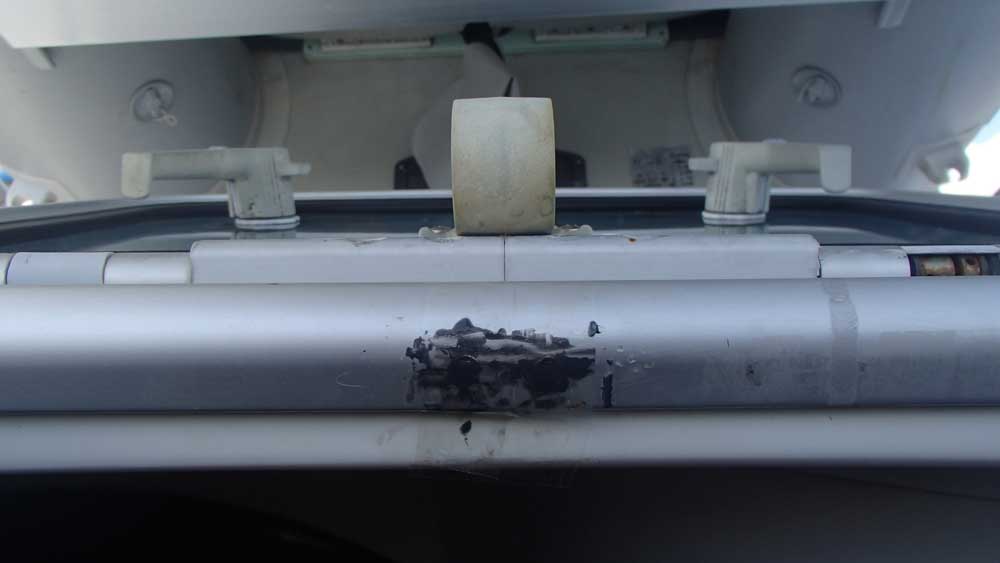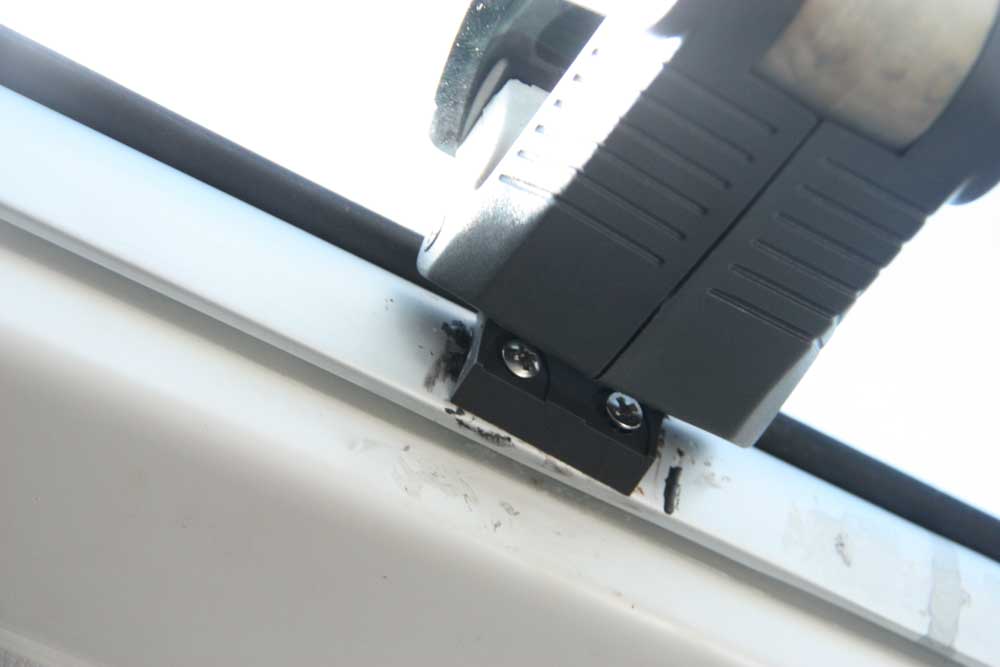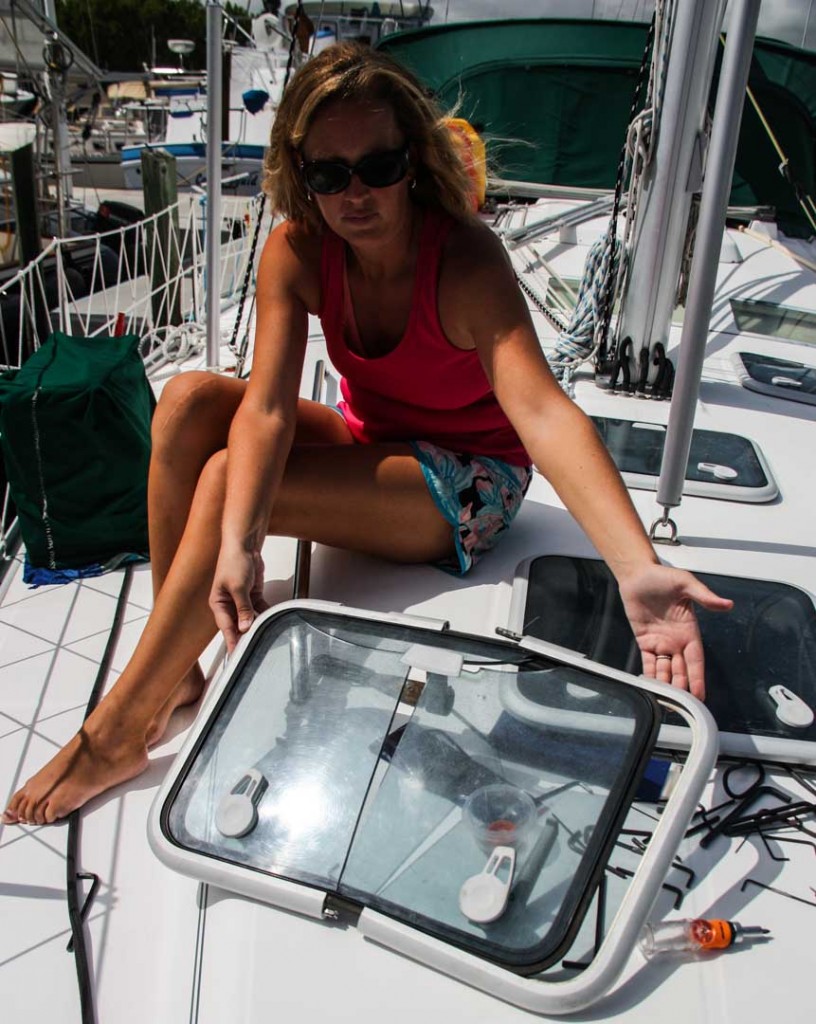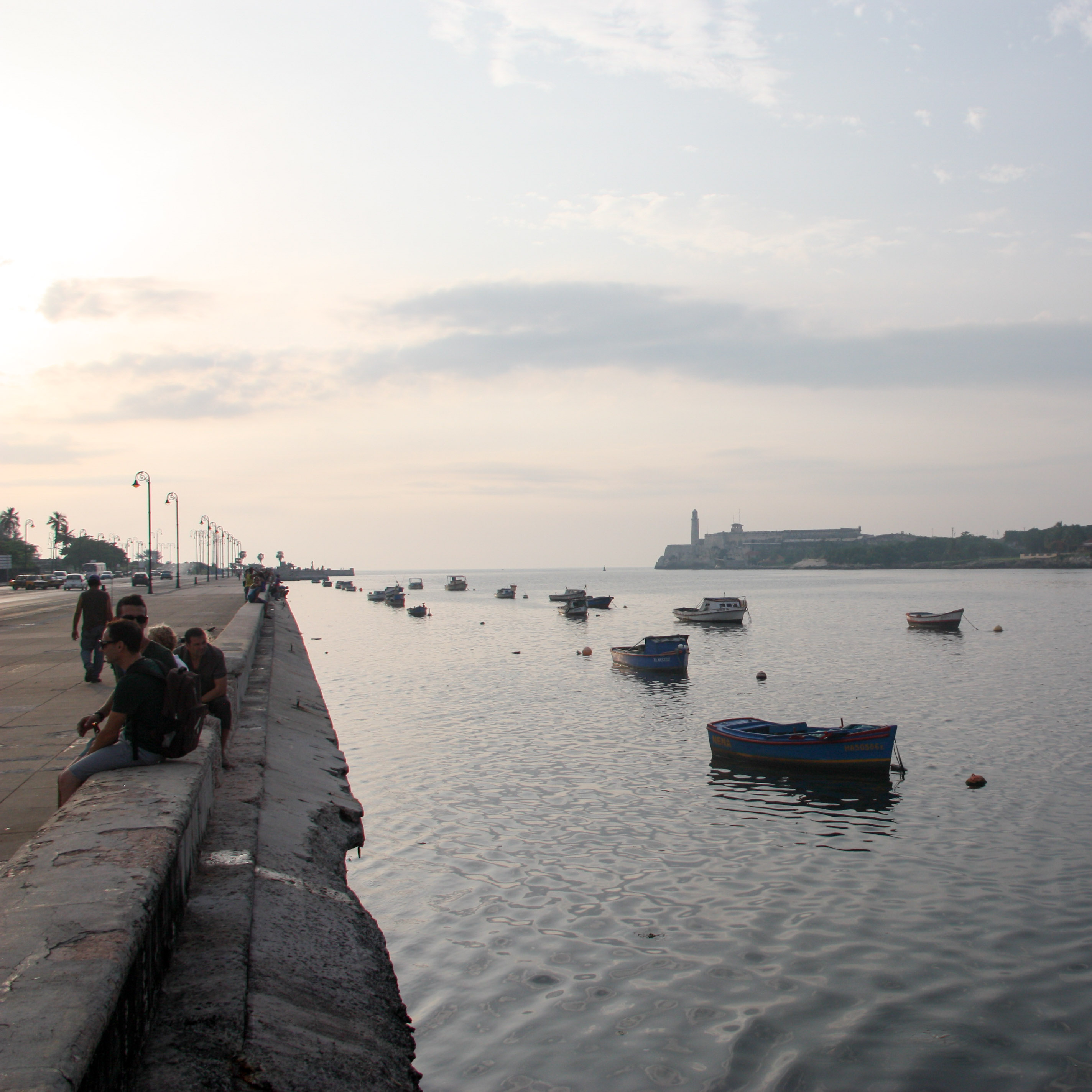On a sailboat the two biggest consumers of power are the refrigerator and personal electronics. When we were in the Bahamas last winter we ran a generator for about an hour a day to charge the electronics and the batteries. At that time the thermostat in the refrigerator was stuck on – meaning that if you had the power it would run continuously and the whole fridge would freeze if left on overnight. We managed to prevent freeze ups by turning the fridge on when the solar was producing enough to run it or if the generator was on. It worked but sometimes things would get a little warm overnight and on cloudy days we need to run the generator a lot longer than our normal one hour. We never had any milk go bad but it wasn’t icy cold either. Now that we had unlimited power it was time to put a proper thermostat in.
The thermostat for our fridge is mounted in a small rectangular protective cover which attaches to the roof. When I removed the screws holding the cover to the roof I found that it had been full of water at one time. The old thermostat must have sat in the water for an extend period and was completed rusted. The temperature handle was seized and actually broke off rather than unscrew to get the thermostat out of the cover. Not sure how the water got into the cover but I think either water spilled on the counter and ran into the cover along the roof of the fridge or the fridge ran too long without being defrosted and then when it was finally defrosted water filled the cover submerging the thermostat. My feeling is that it was a spill not frost but either way not having a drain hole in the cover was a mistake. Pulling out the thermostat and putting the new one was easy once I found the right model of thermostat to use which took a bit of hunting.
With the fridge fixed, we began another little project.
When we met the previous owner of the boat, his wife mentioned that they wanted to open up the bench in the owner’s stateroom to give some extra storage space. I decided to tackle this as I was eyeing the current linen closet covetously for a tool storage area. The one problem was I could not see into the cabinet anywhere to see if drilling and cutting into it would hit something like wires or hoses. In the end I drilled a hole from the bottom of our locker into the space, then dropped a flashlight into the space and took pictures with a camera to see the inside. Satisfied that there was nothing in the space I marked out where the hole was to be with a whiteboard marker. Leah helped me decide how big to make the hole and then once were happy with our marks she inadvertently wiped the marks while cleaning some sawdust from drilling another exploratory hole. Was that 1 1/2″ or 1 3/4″?? Shoot!
Remarked the lines and cut the hole which went not too bad. Next I used some pine wood, screws and glue to install supports for the lid of the compartment. Once done the space was filled but wasn’t nearly as big as we initially envisioned taking only about half the contents of the linen closet. My tools would have to continue to reside in the nav station bench, but we had opened up some previously unused space.
Project number two…completed!
I have posted about anchors before and our choice to buy an oversized 85 pound modern design anchor. It has been great, always setting (except at Thunderball Grotto where there was 4″ of sand on coral), never dragging and letting us sleep at night regardless of the wind, but it is almost too big for the anchor windlass to lift back onto the boat. I added a short length of rope to the anchor chain to allow me to help pull the anchor on board instead of overloading the windlass. The first time I used the rope I pulled the chain off the gypsy (part of the windlass that grips the chain) and the anchor fell back into the water, the next time I pulled while sitting down so as not to lift the chain out of the gypsy and everything went well. A while later I was standing and pulling but the hatch behind me was open and stepped into the hole while giving it everything I had to pull the anchor up. I wasn’t hurt too bad but the bracket that holds the hatch open was broken and the clear plastic was cracked.
Over time the crack grew and the hatch stopped being water proof and it would leak during rain storms. We ordered a new hatch lense and friction hinge assembly (you can’t get just the bracket) for about $250 – ouch! The bracket is riveted into the side of the boat, which means the only way to remove the rivets is to drill them out or remove the whole hatch. After drilling them out, there was no way I was using a rivet again; but there was nothing for a screw to bite into. So I drilled as far as I dared and filled the hole with epoxy. Then once the epoxy was hard I drilled a pilot hole into the epoxy. This gave me a solid mass of epoxy with a hole to screw into. The screws went in without a hitch and the friction hinge was fixed! Only 4 months later!
Replacing the hatch lens (which is actually plastic) was a disaster! This should have been predictable but of course the instructions make it look so easy; in the end it took both Leah and I, wedges and shims to finally pry the frame halves apart. During the process the old lens actually broke into pieces but we got it all apart. The new glass went into half the frame without any trouble but was really hard to get the second frame piece to mate with the first. In the end a combination of hitting it on the deck, sitting on it and pushing it got it together. The hinges didn’t line up at first but I eventually got them and the hatch change out was complete. Only four more hatches to go! Next time I think will send the hatches out for a lens change out rather than beating them apart and potentially ruining one.
With all the work we’ve done over the last few months Viatori is in better shape than she has ever been while in our care. We have learned a lot and gotten more experienced at every task associated with keeping her in fighting form. If we part, it will be bittersweet to say the least.
